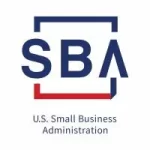Incentivizing Employee Health
Should your organization use incentives to increase vaccination rates among employees?
Numerous household names such as Trader Joe’s, Dollar General, and Instacart have announced their plans to use incentives to increase vaccination rates among employees. In addition to monetary incentives, some employers are offering paid days off due to vaccine side effects and other non-monetary incentives. Such measures have been shown to increase compliance among employees, so the next question becomes, “is doing so the right move for your organization?”

Using Incentives
Small incentives such as gift cards with low to medium monetary value have been used in a range of industries from healthcare to company rewards programs for some time now. In particular, compensation has been shown to significantly increase participation and retention in clinical trials..3 While incentives for vaccines are in uncharted territory, incentive effectiveness across all other industries demonstrates the potential incentives can have for increased vaccination rates. Overall, when utilized correctly, vaccine incentives are not only effective, but also ensure the safety of your employees in these tumultuous times.
The Type and Amount of Incentive
Guidelines encourage employers to only use incentives of small to medium value so as not to exert undue influence on employees. Best practices also suggest that employers consider their company culture when choosing the type and amount of the incentive that will be most effective in encouraging vaccination.4 While the type and amount of incentive needs to pique employee interest, employers should also be cognizant that some employees may interpret incentives as conveying that the vaccination has undo risks (and the greater the incentive the greater the perceived risk).5 It is also important to note that monetary incentives, including gift cards, are preferred 3:1 over physical gifts. To provide perspective, we conducted an informal survey of partners and customers which revealed that approximately 40% of employees would complete the vaccination process for a $100 incentive or less — this is good news for employers given large incentives may convey additional risk and may lead to the perception that receiving a vaccine was in fact not a “voluntary” decision.
Timing, Messaging, and Administering
Timing is one important factor to keep in mind as setting a timeline during which employees must receive their vaccination will increase the efficiency and success of your vaccine incentive program. According to the National Law Review, “a shorter time period could be used to encourage employees to get vaccinated as soon as it becomes available to them. A longer time period might allow employees to delay vaccination (e.g., employees who are pregnant) and still ultimately be eligible for the incentive.”
An emphasis on a direct chain of communication will also help employees in feeling supported. In fact, employers should consider designating a program coordinator or “point person” who oversees, reviews, and responds to questions in addition to documenting vaccinations and receipt of the incentive. Due to the sensitivity of vaccine information, this leader should also ensure that all information is kept confidential.
Incentive Best Practices
The following have become standard guidelines in offering incentives:
- Prepaid incentives yield higher responses than no incentives or incentives paid after a desired action. However, for more difficult tasks, post event incentives are more likely to achieve the desired result.
- Monetary incentives, gift cards included, yield higher response rates than merchandise
- Response rates increase as the incentive value increases, but not linearly and with a decreasing rate of impact
- Small incentives are more effective than drawings or sweepstakes with a chance to win a larger incentive
Vaccine Caveats
On Jan. 7, the Equal Employment Opportunity Commission introduced proposed changes to its wellness program regulations that employers should be mindful of. If adopted, these wellness program rules would require:
- The program is reasonably designed to promote health or prevent disease, is not overly burdensome, and is not a subterfuge for discrimination.
- It is not a “gateway plan,” requiring employees to submit to a medical exam or inquiry in order to access an enhanced benefits package.
- The program offers a reasonable accommodation to persons for whom it is medically inadvisable to participate.
- Participants are provided with a notice informing them of why their information is being requested, how it will be used, and how it will be protected.
- Incentives are de minimus (low-value gift card, water bottles, etc.)
Conclusion
Overall, offering incentives for vaccines can be incredibly efficient and can serve as a great way to motivate employees to take the COVID-19 vaccine. However, as with all strategies it is important to evaluate your company’s culture to glean how offering such incentives might affect employees. As many major companies are choosing to offer incentives of some sort, doing so might be the next best move for your company.6
Resources
- https://www. forbes.com/sites/edwardsegal/2021 /01 /16/covid-vaccination-incentives-the-risks-and-rewards-for-employers/
- https://www.forbes.com/sites/edwardsegal/2021 /01 /16/covid-vaccination-incentives-the-risks-and-rewards-for-employers/
- https://www.ahajournals.org/doi/full/10.1161 /CIRCOUTCOMES.113.000176
- https://www.natlawreview.com/article/vaccine-incentives-how-employers-can-encourage-employee-vaccination
- George Loewenstein & Cynthia Cryder, Why Paying People to Be Vaccinate
- https://www.ehstoday.com/covid 19/article/21153140/be-careful-about-vaccine-incentives
Ready to design something brilliant?
Schedule a free design session
When we’re done, you’ll:
- Possess a solid grasp of constructing your project.
- Have a comprehensive understanding of best practices for incentive delivery.
- Learn the secrets of the incentives industry and the savings and advantages of utilizing TruCentive for your next program.

If you’re ready to start designing on your own, sign up and start sending samples. There’s no credit card required to start exploring your creative side!

Create “Grade-A” content
Use powerful features to quickly create professional-looking incentive deliveries

At your service
With a TruCentive subscription, you get technical support for all your team members so you can get back to your project fast

Reimagine your productivity
Eliminate the time and frustration managing the procurement, delivery, and management of your rewards and incentives deliveries


